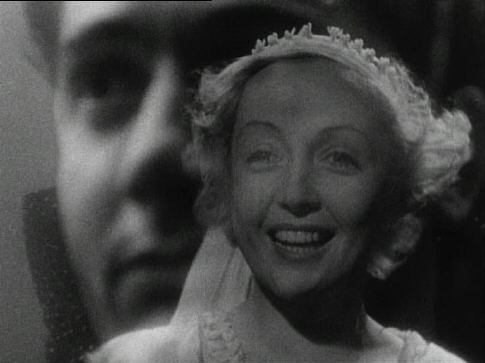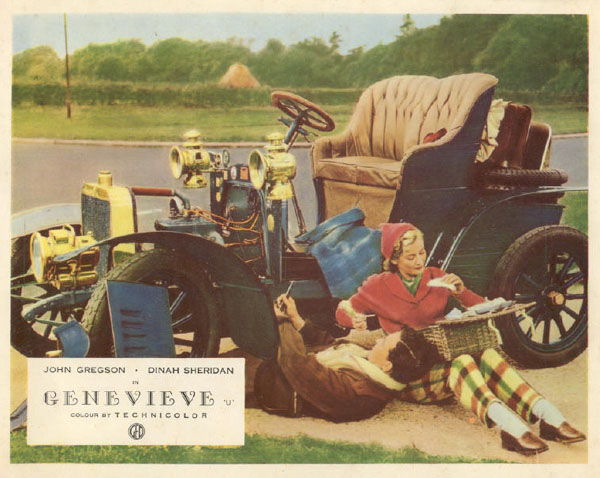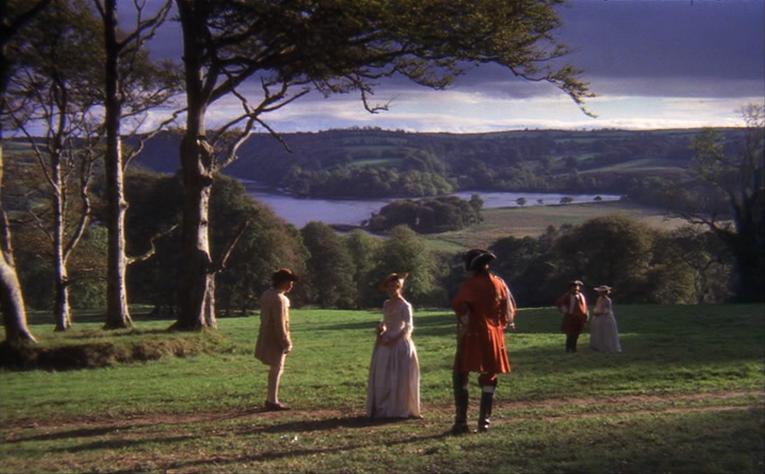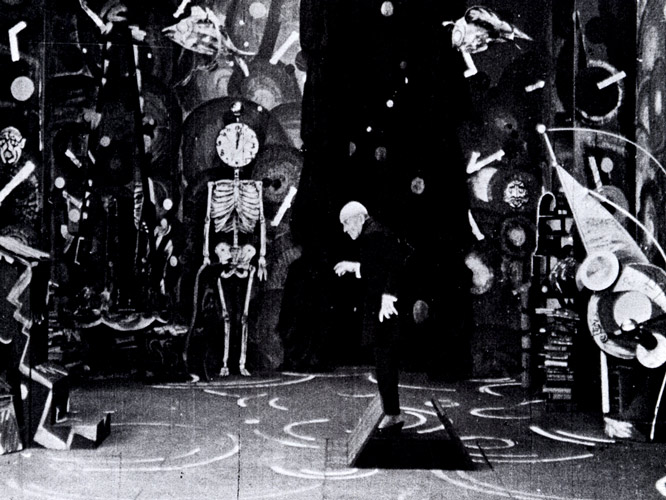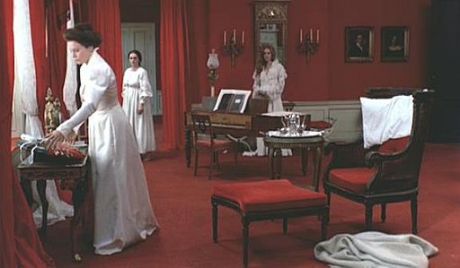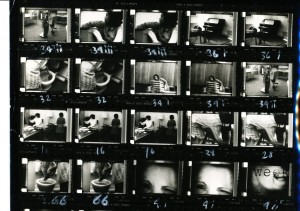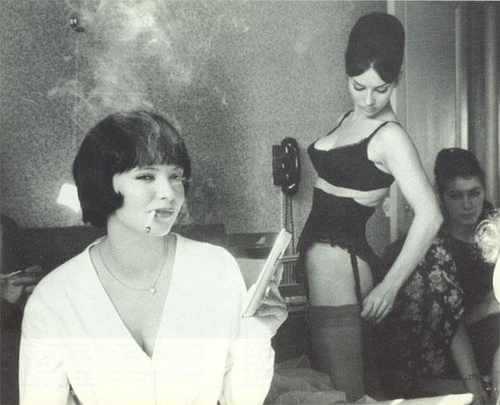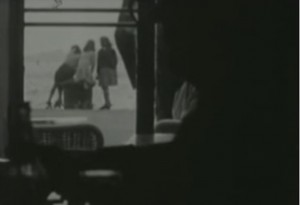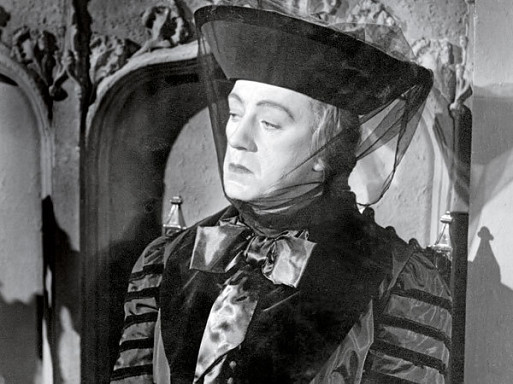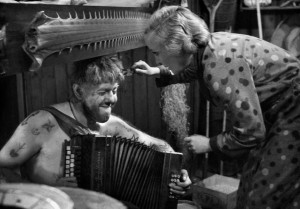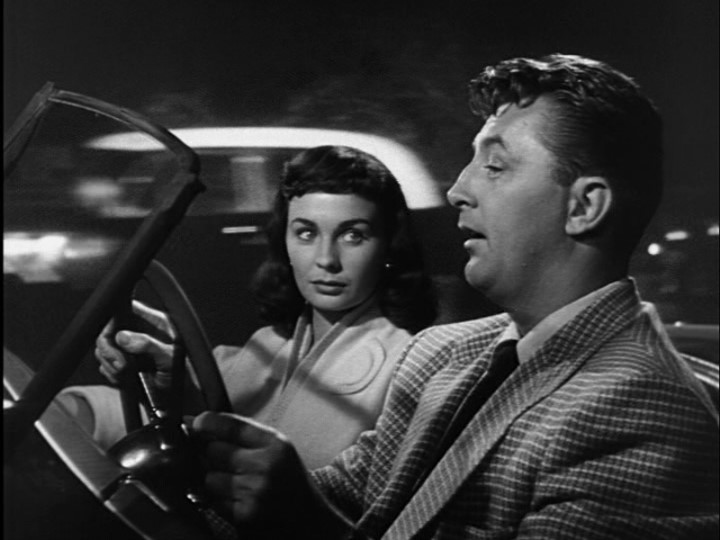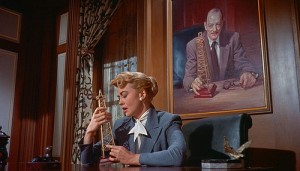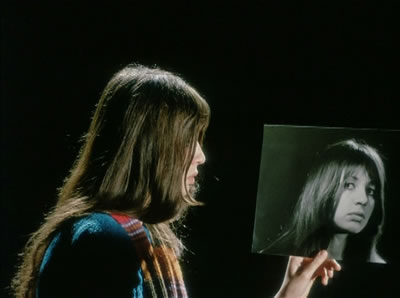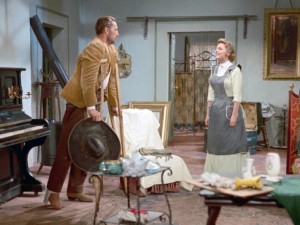From the November-December 1976 Film Comment and exhumed now mainly as a telling time capsule of this period in the world of English film criticism. I’m still indebted to Laura Mulvey for introducing me to Zoo, or Letters Not About Love in her own list, which has subsequently become a touchstone for me.
For illustrations, I’ve selected the first film cited in each list whenever possible, even when there’s no particular significance to the order (when I couldn’t come up with one for The Nightcleaners, at least until Ehsan Khoshbakht — see below — furnished me with production stills or framegrabs; I accorded the late Claire Johnston two others)….Because of a scanning error and oversight, I originally had to omit two entries, those of David Pirie and Paul Willemen, which are now included. In the remaining 27, I’ve corrected a few typos for the first time, and accidentally introduced a few others, but thanks to the generous efforts of my good friend and best proofreader, Ehsan Khoshbakht, on December 4, 2014 (as well as Adrian Martin three days later, who caught a few more glitches), these are now corrected, and five additional illustrations (again, courtesy of Ehsan) have been added. For once, though, I haven’t bothered with French accents. — J.R.
I recently conducted a survey which consisted of asking thirty-five people in the U.K., all connected in some way to film, to provide me with two lists: twelve film titles and six texts or authors relevant to cinema. Although, in order to narrow my scope, I deliberately refrained from including any of the local critics who published “ten best” lists in the Winter 1971-72 Sight and Sound or the October 1969 Cinema, my essential aim wasn’t to supplement these lists but to try something a bit different. I invited each participant to add a brief explanation or description if she or he wanted to, with the idea that many quite reasonably feel that the entire notion of a ten-best list is debatable. Being interested in individual lists rather than tabulations, I also encouraged idiosyncrasy and permitted cheating (via ties, alternate choices or whatever), generally promoting the notion that I wanted existential self-definitions of some kind.
I basically had three motives: (1) Recalling my early days as a cinephile, in Manhattan in the early Sixties. I acknowledge the important role that lists had in my early film education, when I began to use the results of an international critics’ poll in the Winter 1961-62 Sight and Sound as a casual guide to my explorations. All things considered, I suspect it probably wasn’t and isn’t such a bad method to start off with. It gave me certain initial hints about which critics to read, for one thing (in terms of which writers chose to stand by which films). And although its pedagogic value is undoubtedly limited, it does provide the impatient student with some potentially stimulating short-cuts.
I wanted to get a loose cross-section of English tastes in film, as a matter of pure documentary interest. Consequently I extended my inquiry to include not merely critics, but people related to film in various ways. I obviously can’t claim that the results are or could have been in any way comprehensive, but I did make a conscious effort not to make the range of people I asked unduly exclusive, specialized, or slanted in any particular direction.
Finally, and more tentatively, I was interested in discovering how many people I asked would be willing to commit themselves in so stark a manner. The answer to (3) is twenty-nine, myself included. Within the limits of space and format, I’ve tried to adhere to the “form” as well as the “content” of the responses, letting them speak for themselves. –- J.R.
Nigel Andrews (film reviewer, The Financial Times): L’ATALANTE, BEYOND THE VALLEY OF THE DOLLS, BROADWAY MELODY OF 1938 (Roy del Ruth), DREAMS OF A RAREBIT FIEND (Winsor McCay), GERTRUD, I KNOW WHERE I’M GOING (Michael Powell, KINGS OF THE ROAD (Wim Wenders), LONG DAY’S JOURNEY INTO NIGHT, THE MAN WHO LAUGHS (Paul Leni), A NIGHT AT THE OPERA, THE PASSENGER, LA REGLE DU JEU. “Strictly a desert island selection — i.e., the twelve films I could watch most often without getting bored. I have cheated on only one entry — item number four is a series of cartoons,” Books: Durgnat on Film, Jean Renoir (Raymond Durgnat), The Pleasure Dome (Graham Greene), Kiss Kiss Bang Bang, Adventures with D. W. Griffith (Karl Brown), Godard on Godard (ed. Tom Milne).
Brian Baxter (deputy director, National Film Theatre; author, The Films of Judy Garland): “The films are in no special order after the first six and are selected on a highly personal basis as works which have convinced me of the possibilities that cinema can attain. The books are those which stimulated me most (and it shows I do not like reading about non-American films).” 1. A MAN ESCAPED; 2 AU HASARD BALTHAZAR; 3. LANCELOT DU LAC; 4. ORDET; 5. GERTRUD; 6. AN AUTUMN AFTERNOON (Ozu); UNE SIMPLE HISTOIRE (Hanoun), ONLY ANGELS HAVE WINGS, THE SEARCHERS, VOYAGE IN ITALY (Rossellini), THE WIZARD OF OZ (LeRoy/Fleming), THE MUSIC BOX (Laurel and Hardy), MARNIE, MONSIEUR VERDOUX. Books: Agee on Film, The American Cinema (Sarris), Memo from David O. Selznick, Westerns (French), The Stars (Edgar Mor in), The Immediate Experience (Robert Warshow).
Geoff Brown (contributor, Monthly Film Bulletin, Sight and Sound): “The movies I choose have all provoked very strong (and mostly pleasurable) reactions from my Short Trouser period onwards, and thus contribute to my psychological make-up: GENEVIEVE, the Popeye cartoon A DREAM WALKING, TOP HAT, LONDON TO BRIGHTON IN FOUR MINUTES (a television filler of the 1950’s, when it was shown thrice daily, or so it seemed), HALLELUJAH!, LOUISIANA STORY, RESCUED BY ROVER (seven-minute British epic made by Cecil Hepworth in 1905), IT ALWAYS RAINS ON SUNDAY, STREET OF SHADOWS (lunatic British B-feature of 1953), VOYAGE SURPRISE, FLASH GORDON’S TRIP TO MARS, MONKEY BUSINESS (Marx Brothers). Some of the following critical texts aren’t critical and aren’t concerned with cinema, but all provide constant stimulus: Pauline Kael’s article ‘Raising Kane,’ Raymond Durgnat’s A Mirror for England, Eisenstein’s article ‘Dickens, Griffith and the Film Today,’ the luminously comic writings of Robert Benchley, Albert E. McLean Jr.’s American Vaudeville as Ritual (studying the interaction between a popular entertainment medium and its audience), the work of Nathanael West (an artistic, rather than academic treatment of the same theme),”
Richard Combs (editor, Monthly Film Bulletin; contributor, Sight and Sound): BARRY LYNDON, DUEL IN ME SUN, THE IMMORTAL STORY/TEN DAYS’ WONDER, SIGNS OF LIFE (Herzog), MAJOR DUNDEE, SEVEN WOMEN, THE TARNISHED ANGELS, TOL’ABLE DAVID,/LAZYBONES, ULZANA’S RAID/DUEL AT DIABLO, VAMPYR, LES YEUX SANS VISAGE/HOTEL DES INVALIDES, WALKING DOWN BROADWAY. Texts: Films and Feelings (Durgnat), “King Vidor’ (essay by Durgnat in Film Comment), “Roman Polanski” (article by Tom Nairn in Cinema), “Celluloid Apocalypse” (Notes on THE BIRDS by David Rudkin in Cinema), Elia Kazan issue of Movie, Godard on Godard. “A list of personal prejudices which gives preference to Westerns and horror films over thrillers, and to films distinguished by a certain rawness and incompleteness, either of subject (BARRY LYNDON) or form (MAJOR DUNDEE, WALKING DOWN BROADWAY), rather than by a classical perfection. Texts mainly for those directors who didn’t make it into the films.”
Steven Dwoskin (filmmaker; author, Film Is): In chronological order, GENUINE (Wiene), EARTH, THE MAN WITH A MOVIE CAMERA, THE SEASHELL AND THE CLERGYMAN (Dulac), ORPHEE, PULL MY DAISY (Leslie/Frank), KISS (Warhol), FLAMING CREATURES (Smith), WAVELENGTH, HISTORY LESSONS (Straub-Huillet). Books: In no order, Cocteau on Film, Film Sense (Eisenstein), The Rise of the American Film (Lewis Jacobs), Experiment in the Film (edited by Roger Manvell), Film and Its Techniques (Spottiswoode), Film Culture Reader (edited by P. Adams Sitney). “All selected in the context of independent film expression.”
Andi Engel (editor, Enthusiasm; contributor, Second Wave): “I deliberately took only films made in the last two years by people who are still making films.” In alphabetical order, CRIES AND WHISPERS; DIARIES, NOTES AND SKETCHES (Jonas Mekas); EADWEARD MUYBRIDGE, ZOOPRAXOGRAPHER (Thom Andersen), IN THE REALM OF THE SENSES (Oshima); HISTORY LESSONS; LA MAMAN ET LA PUTAIN (Eustache); MOSES UND ARON; NESSUNO O TUTTI (NOBODY OR ALL.) (Agosti, Bellochio, Petraglia, Rulli); NUMERO DEUX; THE TRAVELLING PLAYERS (Angelopolous). Writers: Walter Benjamin, Jay Leyda, Dziga-Vertov.
Simon Field (editor, Afterimage; contributor, Art and Artist): “Here are nine films that for varying reasons I consider indicate the directions of greatest importance within current filmmaking practice. I have consciously limited myself to the period since 1972, thus keeping as near to the present as possible. Three can be considered parts of the English independent cinema: AFTER LUMIERE; L’ARROSEUR ARROSE (LeGrice); THE NIGHT-CLEANERS Part One; PENTHESILEA. The others are, in no particular order, INTRODUCTION TO ARNOLD SCHOENBERG’S ACCOMPANIMENT TO A CINEMATOGRAPHIC SCENE (Straub-Huillet), RAMEAU’S NEPHEW BY DIDEROT (THANX TO DENNIS YOUNG) BY WILMA SCHOEN (Snow), FILM ABOUT A WOMAN… (Rainer), WIDE ANGLE SAXON (Landow), INDIA SONG (Duras). As for important texts — again restricting myself to the last two or three years, and furthermore to those ad dressed to the current problems of an avant-garde cinema — I would cite those by Noël Burch and Peter Wollen (particu larly their essays for Afterimage) and Annette Michelson.”
Joel Finler (author, Stroheim, All Time Movie Favorites; editor, GREED script): In no order, LA REGLE DU JEU, GREED, BELLE DE JOUR, PIERROT LE FOU, L’ATALANTE, INTOLERANCE, THE GENERAL, L’AVVENTURA, CITIZEN KANE, PINOCCHIO, Ozu in the Thirties, THE GRAPES OF WRATH/MY DARLING CLEMENTINE/THE SEARCHERS. “Rather than twelve films, this is really a choice of twelve directors, with most of the films representative of a particularly fruitful period in their careers; i.e., Griffith during the Teens, Renoir during the Thirties, A necessary balance to this list is provided by my selection of twelve most underrated films: JUDGE PRIEST, THE DEVIL IS A WOMAN, MONKEY BUSINESS (Hawks), ROBIN HOOD (Dwan), BATTLING BUTLER, GERMINAL (Capellani), THE SHAME, LA NUIT DU CARREFOUR, TIRE AU FLANC (Renoir), BLIND HUSBANDS, YOU ONLY LIVE ONCE, ME AND MY PAL (Laurel and Hardy). Books: Theory of Film Practice (Burch), Twenty-four Times a Second (Pechter) La Politique des Auteurs (interviews), Adventures with D.W. Griffith, Jean Renoir (Bazin), TV Movies (Maltin, 2nd edition),
Peter Gidal (filmmaker; author, Andy Warhol; contributor, Studio International): “The 2 lists below incorporate some of the films and books (& some plays) that have had a strong influence on my thinking, on my filmmaking, on my film theory.” In no order, Warhol: CHELSEA GIRLS, BLOWJOB, **** (silkscreens on paper and canvas); Eisenstein: STRIKE (OCTOBER); Vertov: ENTHUSIASM (sections of THE MAN WITH A MOVIE CAMERA); Gidal: ROOM FILM 1973/CLOUDS/CONDITION OF ILLUSION; Godard; Snow: WAVELENGTH/BACK & FORTH/CENTRAL REGION; Kren: TV/TREES IN ALTIUMN; Kubelka: SCHWECHETER; LeGrice: YES NO MAYBE MAYBE NOT/CASTLE 2/SPOT THE MICRODOT; Fuller: PICKUP ON SOUTH STREET; Bresson: MOUCHETTE: 2:45 (Raban)/FILM NO. 1 (Crosswaite)/ZORNS LEMMA (Frampton). “Books or essays (nothing on film as such): Althusser: For Marx, Lenin and Philosophy (anthologies); Beckett: How It Is/Molloy/Murphy/Watt/Dialogue with George Duthuit/Proust/ Imagination Dead Imagine/The Lost Ones; as staged with SB’s assistance: Not I (Waiting for Godot/Play/Footfalls/Come & Go/Endgame; Brecht; Gesarnmeite Werke (+ Kafka’s Betrachtungern, some stories) + Karl Valentin: Gesammelte Werke (written; and recorded on tape and film); Marx: Critique of the Gotha Program (with Engels’ notations), Mao: Four Essays on Phi losophy, Engels: On Capital; some writ ings on Semiotics and post-Structural ism (about eight pieces) (& some Freud); Reading Finnegans Wake (record, with Cyril Cusack) (& Bellmer’s Die Puppe).”
Gillian Hannon (deputy head, Infor mation and Documentation, British Film Institute): Inevitably a list of most valued films is apt to change with mood and circumstance, although a central core remains constant, it seems. Inevita bly, too, there have to be many omis sions. All the following films have given me great pleasure and continue to do so on repeated viewing, and they also ‘stand in’ for other work by their di rectors and stars: AN AUTUMN AFTERNOON, THE BAND WAGON, LA FEMME INFIDELE, FRENCH CANCAN, LIFE OF OHARU, MADAME DE…, THE MAGNIFICENT AMBERSONS, NOTORIOUS, OUT 1:SPECTRE, THE PRIVATE LIFE OF SHERLOCK HOLMES, THE SEARCHERS, THERESE DESQUEYROUX. The books are mainly those which I found particularly challenging and/or stimulat ing at the time of reading (in most cases, some years ago) and this omits books, which I value equally, that provided in sights and information about particular films and directors or particular areas of the cinema. I have also included a book which greatly increased my appreciation of Japanese cinema by teaching me about Japanese traditions.” Theory of Film Prac tice, Nature of Film (Kracauer), The World of the Shining Prince (Ivan Morris), Signs and Meaning in the Cinema ( Wollen), Hitchcock’s Films (Wood).
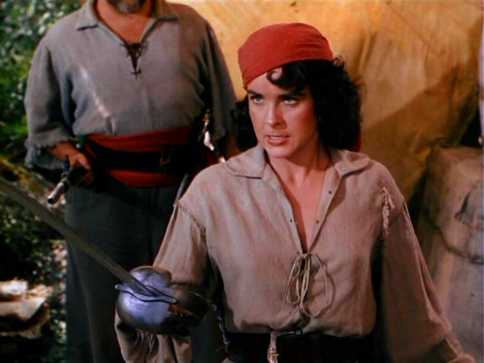
Claire Johnston (editor, The Work of Dorothy Arzner: Towards a Feminist Cine ma; co-editor, Frank Tashlin and Jacques Tourneur; contributor, Raoul Walsh, Screen): 1. The Berwick Street Collective’s THE NIGHTCLEANERS as read through Colin MacCabe’s essay “Realism and the Cinema: Notes on Some Brechtian Theses” (Screen, Summer 1974). 2. Raoul Walsh’s PURSUED as read through Paul Willemen’s essay “The Fugitive Subject” (EFF, 1974). 3. Laura Mulvey and Peter Wollen’s PENTHESILEA as read through Peter Wollen’s article ‘The Two Avant -Gardes” (Studio International, Nov.- Dec. 1975). 4. Ernst Lubitsch’s TROUBLE IN PARADISE as read through Stephen Heath’s essay “Film and System: Terms of Analysis” (Screen, Spring-Summer 1975). 5. John Ford’s YOUNG MR. LINCOLN as read through the Cahiers du Cinema analysis (No. 223, 1970). 6. Godard’s NUMERO DEUX as read through Walter Benjamin’s essay “The Work of Art in the Age of Mechanical Reproduction” (Il luminations). 7„ A combination of the London Women’s Film Group’s WHOSE CHOICE, Claudia Alemann’s THE POINT IS TO CHANGE IT, and Joyce Wieland’s RAT LIFE AND DIET IN NORTH AMERICA as read through Han Magnus Enzensberger’s essay “Constituents of a Theory of Media” (New Left Review, No. 64). 8. Chantal Akerman’s JEANNE DIELMAN, 23 QUAI DU COMMERCE –1080 BRUXELLES as read through Julia Kristeva’s essay “Sig nifying Practice and the Mode of Produc tion” (EFF, 1976). 9. Dorothy Arzner’s DANCE, GIRL, DANCE as read through Laura Mulvey’s essay “Visual Pleasure and Narrative Cinema” (Screen, Autumn 1975). 10. A combination of Frank Tashlin’s ARTISTS AND MODELS and Nelly Kaplan’s PAPA, LES PETITS BATEAUX as read through Stephen Heath’s The Nouveau Roman. 11. A combination of Minnelli’s HOME FROM ME HILL and Fassbinder’s MARTHA as read through Freud’s essay “Family Romances”. 12. Tourneur’s ANNE OF THE INDIES as read through Joan Riviere’s essay “Womanliness as a Masquerade’ (in Psychoanalysis and Female Sexuality). “I have placed an emphasis in the listing on the reading of a film, not to underestimate the importance of filmmaking as a practice, but as a correc tive to the assumptions underlying list ings of this kind and traditional notions of film as an isolated artifact; instead, the act of filming and the act of reading should be seen together. I have chosen those readings which I think are impor tant at the present time from the point of view of developments in film theory. My choice of texts reflects this approach: Marx as read through Althusser; Freud as read through Lacan; Brecht as read through Benjamin; Levi-Strauss as read through Juliet Mitchell; Lacan as read through Julia Kristeva; Enzensberger as read through Stephen Heath.)”
Mark Le Fanu (co-editor and con tributor, Monogram): “Cinema: VIVRE SA VIE, LE MEPRIS; obsession: MOONRISE (Bor zage), HUMAN DESIRE (Lang); comedy: TROUBLE IN PARADISE, TO CATCH A THIEF; dance: THE BAND WAGON, FUNNY FACE; marriage: DREAMS (Bergman), VIAGGIO IN ITALIA, LATE SPRING (Ozu); history: THE LIFE OF OHARU, LITTLE BIG MAN, BARRY LYNDON; violence: MERRILL’S MARAUDERS (Fuller), RED LINE 7000 (Hawks); death: AN ACTOR’S REVENGE (Ichikawa), THE LADY FROM SHANGHAI. Texts: Godard on Godard, Sirk on Sirk.http://www.wikipedia.org/
Malcolm LeGrice (filmmaker; con tributor, Studio International): “Twelve films in no particular order. Another day I might well produce a slightly different list.” T.V., (Kren), RAINBOW DANCE (Lye), 2:45 SECONDS (Raban), THE MAN WITH A MOVIE CAMERA (Vertov), RETOUR A LA RAISON (Man Ray), STRUCTURAL STUDIES (Birgit and Wilhelm Hein), THE FLICKER (Conrad), BALLET MECANIQUE (Leger), ALPHAVILLE (Godard), ONE SECOND IN MONTREAL (Snow), FILM PRINT (Gidal), SIRIUS REMEMBERED (Brakhage). I can think of no film critic or theorist whose work has been of any use to me. All in fluences have come tangentially from other areas — art, science, philosophy, politics, psychology.”
Colin MacCabe (member of Screen editorial board and contributor): “I have decided not to submit a list of films for two reasons. Firstly while the compiling of such lists can be an enjoyable activity in certain circumstances, the publication of the results can only, given the history of such lists, constitute a new elitism giving rise to new varieties of film snobbery. Secondly the nature of these lists deter mines that the emphasis must fall on ‘great works’ in such a way that the occasional pleasures of film are implicitly derided. Consequently any list of great films is pretentious and falls into the most traditional kind of film criticism….I do, however, think that there is some point in providing a list of texts which may be of use in the attempt to theoretically analyze film. Such a list cannot constitute a hit parade but rather a possible program of work. Paul Willemen’s ‘The Fugitive Subject’ (on PURSUED) and Stephen Heath’s ‘Film and System: Terms of Analysis’ (on TOUCH OF EVIL) provide examples of the most ad vanced analyses of film in which there is a real attempt to understand the in terplay of the spectator as spectator sit ting in the cinema and the spectator as he or she ‘utters’ or ‘enounces” the film, that is to say, as he or she accepts or refuses certain types of identification on the screen. This kind of ‘psychoanalytic’ reading can be further investigated (in relation to literature) in Roland Barthes’ S/Z. The weaknesses of these film analyses arise at the point at which they touch, on the one hand the very nature of visual pleasure, and on the other the relationship between the interplay in the cinema and the heterogenous social determinations which fix the site of that interplay. In order to elaborate these difficulties starting points might be found in the analysis of vision given by Jacques Lacan in Le Seminaire XI (Paris 1973) in the section entitled ‘Du regard comme objet petit a’ and, with regard to the area of social contradiction, in Louis Althusser’s “Notes for a Materialist Theatre” in For Marx. In order to develop Althusser’s comments a theory of meaning would need to be developed such that on could analyze the conditions of discursive contradiction. Such a theory is the aim of Michel Pecheux’s Les vérités de la Palice (Paris, 1975).”
David McGillivray (scriptwriter, HOUSE OF WHIPCORD, FRIGHTMARE, con tributor, Films and Filming, Screen Interna tional): “I never see films more than once. Except these (in no order): KIND HEARTS AND CORONETS (Robert Hamer), THE PIC TURE OF DORIAN CRAY (Albert Lewin), ON THE TWELFTH DAY (Wendy Toy), SUNSET BOULEVARD. SEANCE ON A WET AFTER NOON, KNIFE IN THE WATER, PSYCHO, NIGHT OF THE LIVING DEAD), STOLEN KISSES (Truf faut), THE EXORCIST, DON’T LOOK NOW (Roeg), THE WIZARD OF OZ. The seminal influence on my career was F. Maurice Speed’s Film Review, which I received every Christmas from the age of nine. When I discovered in 1964 that Monthly Film Bulletin published even longer lists of credits, it was love at first sight,”
David Meeker (central program ad viser, British Film Institute; author, Jazz in the Movies): In chronological order, LES VAMPIRES, DIE NIBELUNGEN, STEAMBOAT BILL JUNIOR, A PROPOS DE NICE, LA SIGNORA DI TUTTI, CITIZEN KANE, RED RIVER, THE MEDIUM (Menotti), STRANGERS ON A TRAIN, FRENCH CANCAN, THE SEARCHERS, LOLA: “The twelve movies that have most influenced my way of thinking about the cinema and which continue to give me the greatest pleasure. As far as I am consciously aware, only one text has any decisive and continuing effect, Lindsay Anderson’s article ‘Stand Up, Stand Up’ (Sight and Sound, Autumn 1956).”

John Morgan (proprietor, National Film Theatre Bookshop): BEAUTY AND THE BEAST. LES ENFANTS DU PARADIS,THE MAG NIFICENT AMBERSONS, THE PUMPKIN EATER, ON THE WATERFRONT, A STREETCAR NAMED DESIRE, LAST TANGO IN PARIS, DEATH IN VENICE, LA GRANDE ILLUSION, MEMBER OF THE WEDDING, MOMENT OF TRUTH (Rosi), THE HEART IS A LONELY HUNTER (Robert Ellis Miller). Writers: André Bazin, Pauline Karl, Robin Wood. “Simply, the sort of film I value most, the type of Cinema I hope for, is one which, uncon sciously, rather than deliberately and de fiantly, embodies an affirmative and celebratory spirit — although the latter are rare enough to queue in the rain for. In small doses, the films in this list contain this spirit.”
Movie: “When approached to partici pate in this exercise, we thought a com posite list would make more sense than individual ones. However, in trying to compile such a list we realized that we were ending up with a very orthodox list which gave no sense of the range of thinking on the magazine (which has four other editorial board members apart from us: Ian Cameron, Douglas Pye, Mark Shivas, and Robin Wood). We de cided therefore on individual lists. With one exception (Michael Walker), we have not listed favorites but, as teachers as well as critics, we have gone for movies and texts useful in representing a range of issues and interests, while wishing to point to a general connection between usefulness and richness. With the excep tion of Michael Walker’s list of movies (in ranking order), listings are in alphabetical order.”

Charles Barr: A CANTERBURY TALE, LES CARABINIERS, THE DISCREET CHARM OF THE BOURGEOISIE EUROPA 51, FORT APACHE, THE GOLDEN VISION (Loach, for TV), THE LADY VANISHES, ORDET, THE PIRATE, SANSHO DAYU. Texts: Qu’est-ce que le cinema? (Bazin), “Propositions” (Burch and Dana, in Afterimage No. 5), Ray mond Durgnat on Vidor (in FILM COM MENT), Thomas Elsaesser on Minnelli (in the former Brighton Film Review), Film as Film (V.F. Perkins), Personal Views (Robin Wood).
Jim Hillier: L’ATALANTE, LOLA, THE MAGNIFICENT AMBERSONS, THE PALM BEACH STORY. PSYCHO, LA REGLE DU JEU, RIO BRAVO, 79 SPRINGS (Alvarez), VENT D’EST, WILD RIVER. Texts: Qu’est-ce que Ie cinema?, Film Form (Eisenstein), Initiation a la semiologie de l’image (Guy Gauthier), Film as Film, “Counter Cinema/VENT D’EST” (Peter Wollen, in Afterimage No. 4), Hitchcock’s Films (Wood).
V.F. Perkins: ANGEL FACE, LE CRIME DE MONSIEUR LANGE, LETTER FROM AN UNKNOWN WOMAN, THE LUSTY MEN, THE PAJAMA GAME, RIDE LONE SOME, SANSHO DAYU, TO BE OR NOT TO BE, TOUCH OF EVIL, THE WRONG MAN. Texts: The World Viewed (Stanley Cavell), Eisenstein’s theoretical essays in general, various essays by E. M. Gombrich, Sirk on Sirk edited by Jon Halliday (to represent my sense of the importance of statements by and interviews with filmmakers), Film as Film, Hitchcock’s Films.

Michael Walker: MADAME DE…, LETTER FROM AN UNKNOWN WOMAN, SCENES FROM A MARRIAGE, A TIME TO LOVE AND A TIME TO DIE, SANSHO DAYU, UGETSU MONOGATARI, THE GOLDEN COACH, LE BOUCHER, BEFORE THE REVOLUTION, WILD RIVER. Those critics I have found to have the most consistent quality: Andre Bazin (Qu’est-ce que le cinema?), John Belton (especially on Borzage, in The Hollywood Professionals, Vol. 3), Charles Eckert (especially “Shirley Temple and the House of Rockefeller,” in Jump Cut No. 2), Thomas Elsaesser (especially “Tales of Sound and Fury”, in Monogram No. 4), V.F. Perkins (especially Film as Film), Robin Wood (especially Personal Views).
Laura Mulvey (filmmaker; co-editor, Douglas Sirk; contributor, Screen): “Films that have influenced my thought: WRIT TEN ON THE WIND; VERTIGO; MOROCCO; MADAME DE…, 2 OU 3 CHOSES QUE JE SAIS D’ELLE; JAGUAR (Jean Rouch); MACHOR KA-MUFF (Straub); LIVES OF THE PERFORMERS (Yvonne Rainer); REASON OVER PASSION (Joyce Wieland); JEANNE DIELMAN, 23 QUAI DU COMMERCE – 1080 BRUXELLES (Chantal Akerman).” Two essays by Al thusser (“Freud and Lacan,” in New Left Review, and “The State and Ideology”); reading Freud in a women’s group; Penelope Slinger’s 50%: The Visible Woman; Joyce Wieland’s True Patriot Love; Viktor Shklovsky’s novel, Zoo, or Letters Not About Love; Screen Autumn 1974 (with translations from Lef); Bachelard’s The Poetics of Space.
Lynda Myles (director, Edinburgh Film Festival; contributor, Roger Corman): In no order, LE GAI SAVOIR (raises prob lems); PENTHESILEA; QUEEN OF THE AMA ZONS (raises questions); RED RIVER (for mative experience); PURSUED (cf. texts); DANCE, GIRL, DANCE (feminist cinema); FILM ABOUT A WOMAN WHO… (uninhibited feminist cinema); THE SHOOTING (aberrant no. 1); the latest genuine New World production (aberrant no. 2); STRIKE (classical political cinema); QUEEN KELLY (?); THE GIRL CAN’T HELP IT (fun and foreground); THE SUN SHINES BRIGHT (dis appearance of narrative). Reading: The American Cinema (formative no. 1), Movie No. 1 (formative no. 2); Wollen’s “Counter-Cinema” (modernism and the avant-garde); “Young Mr. Lincoln” (the problem of the text); Willemen’s “The Fugitive Subject: PURSUED” (a classic text); Johnston’s “The Place of Women in the Cinema of Raoul Walsh” (a key fem inist text).
Chris Petit (film reviewer, Time Out): “Twelve unknown quantities that took me by surprise.” In no order, THE WONDERFUL COUNTRY (Parrish), LES YEUX FERMIS (Santoni) MESSIAH OF EVIL/THE SECOND COMING (Hyuck), TENSION (Berry), TRACK OF THE CAT (Wellman), STRANGER ON THE THIRD FLOOR (Ingster), LIGHTNING SWORDS OF DEATH (Misumi), THE FIEND WHO WALKED THE WEST (Doug las), DON’T MAKE WAVES (Mackendrick), THE SMALL BACK ROOM or AGE OE CONSENT (Powell), THE MAN WITH THE X-RAY EYES or NOT OF THIS EARTH (Corman), THE CAREY TREATMENT (Edwards). Texts: Script of PIERROT LE FOU, Godard on Godard, Signs and Meaning in the Cinema, Negative Space (Manny Farber), A Mirror For England, The Stars (Morin).
David Pirie (contributor, Time Out; author, A Heritage of Horror): “‘In a word…emotion.’ Twelve films, in order, validating the cinema for me.” PEEPING TOM, SPLENDOR IN THE GRASS, QUATERMASS 2/ENEMY FROM SPACE (Guest), ALICE IN THE CITIES (Wenders), QUEIMADA! (Pontecorvo), LA COLLECTIONEUSE (Rohmer), SOMETHING EVIL (Spielberg, TV movie), BIRDS ANONYMOUS (Friz Freleng “Sylvester” cartoon), MESSIAH OF EVIL/THE SECOND COMING, STRANGER ON THE THIRD FLOOR, THE HARDY GIRLS (director anon. – U.S. hardcore), BREEZY (Eastwood). Reading: Manifesto of Surrealism (1924, André Breton), V.F. Perkins editorial in Movie No. 1, Hitchcock’s Films, interview with Roger Corman by Chris Wicking and Vincent Porter in MidiMinuit Fantastique Winter 1964, Peter Wollen, La Mort du cinéma by Gerard Lenne, Variety.
Jonathan Rosenbaum (assistant editor, Monthly Film Bulletin; contributor, Sight and Sound): “Films and texts which have contributed most to my present grasp of what is possible (and desirable) in cinema, and which I expect to learn the most from in the foreseeable future. The order is a rough, tentative estimate of how instructive and inexhaustible I currently believe them to be.” PLAYTIME (Tati); GERTRUD; TIN MINH (Feuillade); ZANGIKU MONOGATARI, SAIKAKU ICHIDAI ONNA, SHIN HEIKE MONOGATARI (Mizo guchi); IVAN THE TERRIBLE; WAVELENGTH; SPIONE (Lang); HITORI MUSUKO (Ozu)/THE MAGNIFICENT AMBERSONS (Welles foot age); LA NUIT DU CARREFOUR/ BOUDU SAUVE DES EAUX/CHARLESTON (Renoir); MONSIEUR VERDOUX /LANCELOT DU LAC; 2 OU 3 CHOSES QUE JE SAIS D’ELLE, A BOUT DE SOUFFLE, ALPHAVILLE (Godard), TO HAVE AND HAVE NOT/SUNRISE (sound version)/IVAN (Dovzhenko)/VERTIGO; DUELLE, OUT 1: SPECTRE, CELINE ET JULIE VONT EN BATEAU, L’AMOUR FOU (Rivette). Texts: Burch: Theory of Film Practice, “Proposi tions” (with Jorge Dana), “To a Distant Observer Towards a Theory of Japanese Film” (in October No. I); “Dickens, Grif fith and the Film Today'”/Russian for malist texts in Screen Autumn 1964 and Cahiers du cinema Nos. 220-221; The Pleasure of the Text (Roland Barthes)/The Worlds of Jazz (Andre Hodeir)/Cover to Cover (Michael Snow); “Preston Sturges: Success in the Movies” (Manny Farber, W. S. Poster); Godard on Godard, inter view with Godard in Cahiers du cinema No. 194/Jean-Andre Fieschi’s texts on Tati; “Montage” (Narboni, Pierre, Rivette) in Cahiers du cinema No. 210/interviews with Rivette in Cahiers du cinema No 204 and La Nouvelle Critique No. 631, interview with Jean-Marie Straub and Daniele Huillet in Cahiers du cinema No. 223.
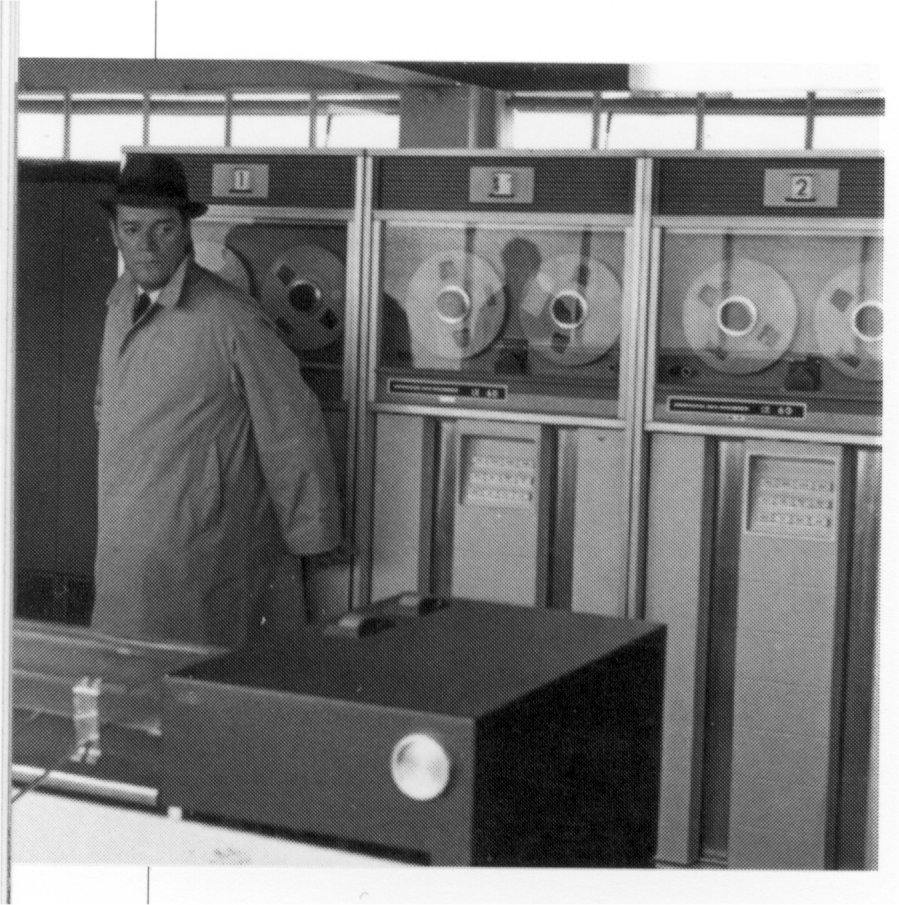
Peter Sainsbury (chairman, British Film Institute Production Board; co-editor, Afterimage): “A close association with cinema builds in the mind strata of influ ence, memory and reflection irreducible to notions of ‘ten best’: likewise one’s reading on the subject. So what follows is a selection from what is currently on the surface, a concern with the develop ment of a modernist aesthetic in the cinema attended by the work of Jean-Luc Godard but especially ALPHAVILLE, 2 0U 3 CHOSES QUE JE SAIS D’ELLE, LE GAISAVOIR, VENT D’EST, NUMERO DEUX; all the work of Michael Snow; all the work of Jean-Marie Straub and Daniele Huillet; the work of Yvonne Rainer; Jacques Rivette’s OUT 1: SPECTRE; Marguerite Duras’ NATHAN GRANGER and INDIA SONG; Stan Brakhage’s DOG STAR MAN; Paul Sharits’ “S:STREAMS:SECTIONS…”. Hollis Framp ton’s ZORNS LEMMA and HAPPAX LEGOMENA; Dziga Vertov’s THREE SONGS OF LENIN and MAN WITH A MOVIE CAMERA; Eisenstein’s STRIKE and OCTOBER; Ken Jacobs’ TOM TOM THE PIPER’S SON.” Signs and Meaning in the Cinema; Theory of Film Practice; Screen (Vols. 12-17); Afterimage (Nos. 4 & 5 especially); Annette Michel son’s writings in Artforum.
Paul Willemen (member of Screen editorial board and contributor; coeditor, Frank Tashlin, Jacques Tourneur): “Twelve pivotal texts in no particular order. NOTE: The following series is premised on the fact that there is no distinction between ‘a film’ and the way that film is read, i.e. that ‘film’ and ‘reading’ form part of the same textual space. The following titles must therefore be seen simultaneously as outlining the boundaries of such spaces and indicating the network of signifiers extending across it. The ‘titles’ themselves are not particularly important, only their conjunction, their imbrication, their interweaving. YOUNG MR. LINCOLN as read through the analysis by the editorial board of Cahiers du cinéma and the comments by Peter Wollen and Ben Brewster in Screen Vol. 13 No. 3 and Vol. 14 No. 3; TOUCH OF EVIL as constructed by Orson Welles and Stephen Heath in Screen Vol. 16 Nos. 1 and 2; a text I am tempted to entitle ‘The Inscription of the Look’ which consists of an interweaving of DYN AMO, GIRL, PURSUED, THE REVOLT OF MAMIE STOVER, Instincts and their Vicissitudes, Le Séminaire Vol. 11, Visual Pleasure and Narrative Cinema, CELINE ET JULIE VONT EN BATEAU, De la Méconnaissance: Fantasme, Texte, Scene, Hitchcock’s Vision (authorial names marking this text are S. Dwoskin, R. Walsh, Freud, J. Lacan, J. Rivette, L. Mulvey, CB. Clément, Hitchcock, and Peter Wollen); THE NIGHTCLEANERS, constructed by the Berwick Street Collective, if read together with or through Brecht’s theoretical writing on the theater and the analysis of the film in Screen Vol. 16 No. 4; NORTH BY NORTHWEST as read through P. Wollen’s analysis in Film Form No. 1; RAMEAU’S NEPHEW BY DIDEROT (THANX TO DENNIS YOUNG) BY WILMA SCHOEN in conjunction with Chapter 10 of C. Metz’s Language and Cinema; TARNISHED LADY (credited to G. Cukor) read in conjunction with Helga Gallas’s account of Lukascsian aesthetics in her book on Marxist theory of literature; ‘PEACE MANDALA, SEVENTH HEAVEN, and STREET ANGEL’ (a space marked by the names of P. Sharits and F. Borzage) when read through Freud’s Contributions to the Psychology of Love, CB. Clement’s De La Méconnaissance: Fantasme, Text, Scene, and the passages of Maud Mannoni’s books dealing with the primal scene and the threat of psychosis; VENT D’EST as put together by Godard, Gorin, and Wollen; NUMERO DEUX and PENTHESILEA (constructed by Godard, Wollen, and MuIvey) read through J. Kristeva’s La Revolution du Langue Poétique; ‘CHRISTOPHER STRONG, MERRILY WE GO TO HELL, and CRAIG’S WIFE’ (all under the sign of D. Arzner) read through Claire Johnston’s ‘Dorothy Arzner: Critical Strategies’ (in D. Arzner, Towards a Feminist Cinema).” The work of Barthes, Wollen, Metz read through Jakobson and Benveniste; Freud/Lacan, Marx/Engels/Mao read through Althusser; Screen since 1971.
Ken Wlaschin (director, National Film Theatre and London Film Festival; au thor, A Bluffer’s Guide to the Cinema; con tributor, Films and Filming): “Twelve films with mythic and personal value to me: THE PASSION OF JOAN OF ARC (my first and most shattering experience with film as great art), Laurel and Hardy in WAY OUT WEST (the funniest and gentlest of comedies), L’ATALANTE (for creating a new understanding of cinema as poet ry), AN AUTUMN AFTERNOON (the most sublime achievement of its kind), THE BIG SLEEP (favorite film, director, and writer), BREATHLESS (for heightening my consciousness about film), Tarkovsky’s SOL ARIS (for proving that the SF films can create the same extraordinary sense of wonder as SF writing), MY DARLING CLEMENTINE (most mythic and moving Western by the master), Cottafavi’s HERCULES AGAINST ATLANTIS (for proving that peplum can be art), Angelopolous’ THE TRAVELLING PLAYERS (for turning politics into epic art), AN AMERICAN IN PARIS (for encouraging me to leave Nebraska), Robert Duvall’s WE’RE NOT THE JET SET (for showing that Nebraska wasn’t that bad after all, or at least had cinematic qualities). Six critics with a special value for me: Andrew Sarris (The American Cine ma, etc.), Manny Farber (“Underground Films”), Raymond Chandler (for his writing about film), James Agee (the poet as film critic), Parker Tyler (the mythologist as film critic), Arthur Knight (for the first book on the cinema that I read and learned from).”

